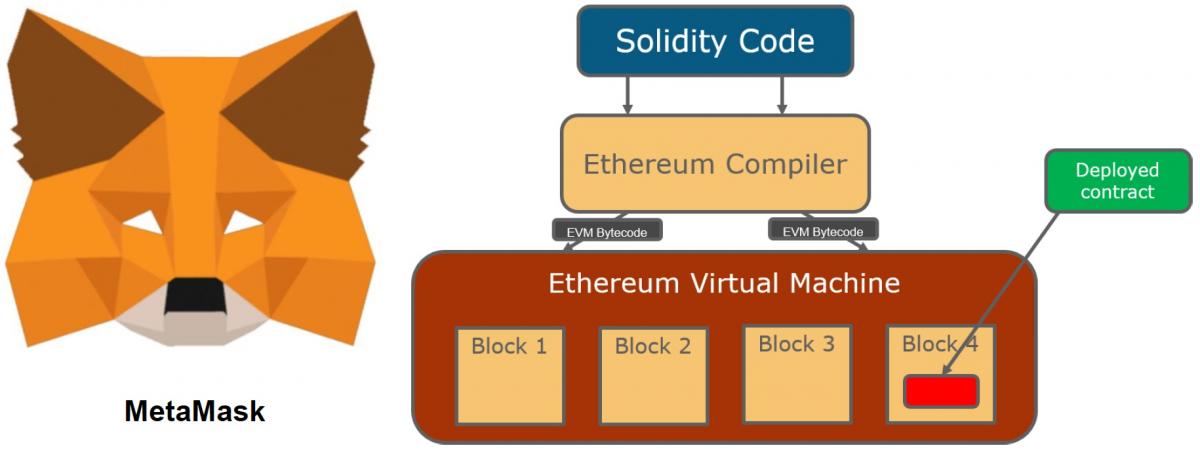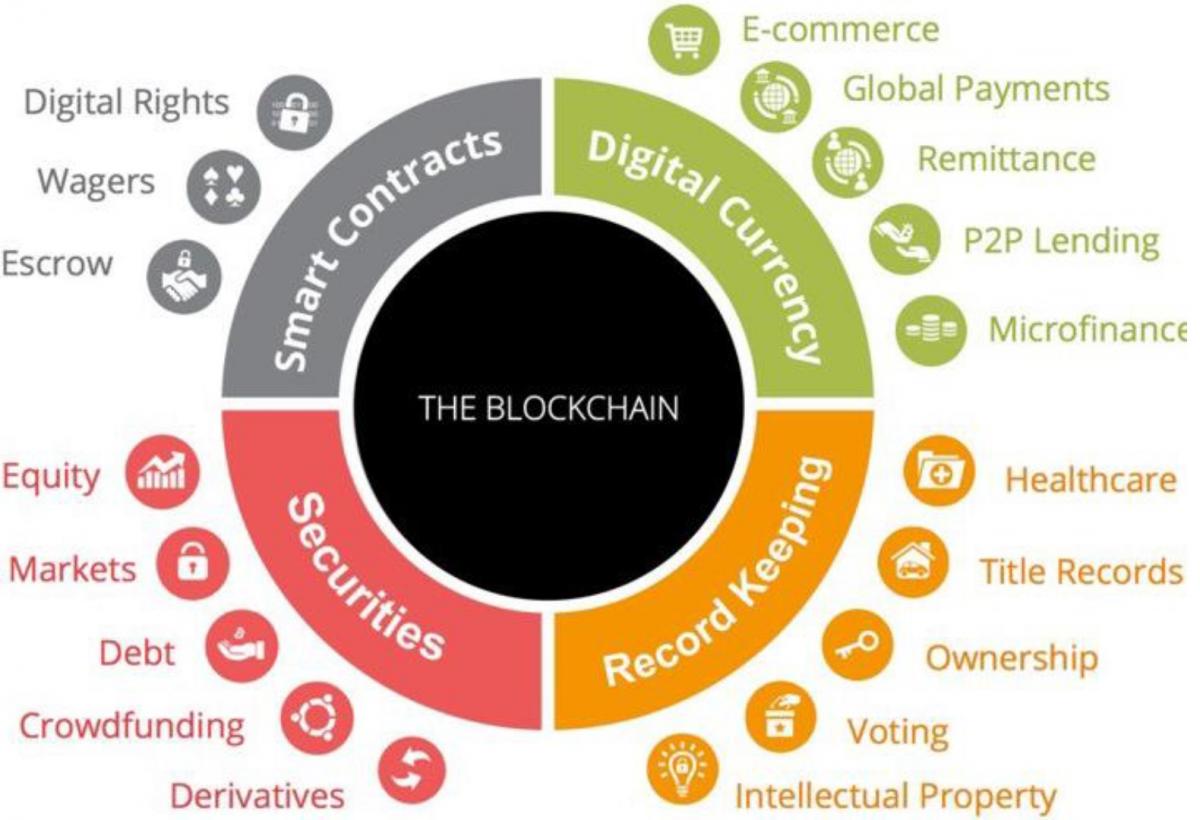World of Blockchain
| Introduction: Despite the fact that the technology is still in a nascent stage of its development and adoption ‘Blockchain’ has emerged to become a potentially transformative force in multiple aspects of government and private sector operations. Blockchain is a digital ledger that keeps a record of all transactions taking place in a P2P network. These networks can be relied upon even for transfer of currency therefore contracts, records and many other kinds of data can be easily shared across the Blockchain network. Gartner, the research and advisory firm, defines five elements of a true blockchain: distribution, encryption, immutability, tokenization and decentralization. Blockchain deployment reduces the need for ‘traditional intermediaries’, instead recognizing the blockchain platform as a trusted entity to enable transactions. | |
 |
|
| 1. History: In 1991, Stuart Haber and W. Scott Stornetta ideated the concept of a cryptographically secured chain of blocks. In 2004, computer scientist and cryptographic activist Hal Finney introduced a system called Reusable Proof Of Work(RPoW) as a prototype for digital cash. In 2008, Satoshi Nakamato conceptualized the theory of distributed blockchain utilizing a peer-to-peer network for timestamping and verifying each exchange without a central authority. | 2. Market value proposition of blockchain: As per NITI Aayog draft paper it is estimated that blockchain could generate USD3 trillion per year in business value by 2030. The World Economic Forum (WEF) anticipates that 10% of the global GDP will be stored on blockchain by 2025. Funding for blockchain-centric start-ups has been consistently growing and was estimated to be around $1 billion in 2017. IBM has more than 1,000 staff and $200 million invested in the blockchain-powered Internet of Things (IoT). |
 |
3. What is Ethereum? Ethereum (conceptualized by Vitalik Buterin in 2013) is a community-built technology behind the cryptocurrency Ether (ETH) and thousands of applications you can use today. Ethereum builds on Bitcoin's innovation. The fundamental blocks of programs composed for the ethereum platform are called “smart contracts”. A transaction in an Ethereum is considered as the data package which is signed and contains the information which is to be sent. Ethereum blocks contain both a transaction list and the most recent “state” of the ledger of these transactions. The “Ether” is the cryptocurrency of Ethereum.
|
|
4. Potential use cases of the Block-Chain: Proof of Existence (Demonstrating data ownership without revealing actual data), Record Keeping, Identity, Forecasting (“predictions market”), Cloud Storage, Ascribe (Secure your work), Supply Chain Management, Blockchain and IoT, Banking (Payments, KYC, reduction of frauds, trading platforms), Government (Online voting, registering land, real estate, devising public policy). Countries like UAE, Estonia, USA are already using Blockchain for Digital Passport, Identity management, e-voting, smart contracts, public archives, and land registry. |
 |
 |
5. Types of Ethereum Networks: Ethereum is an open source platform for creating and deploying distributed applications. Developers should choose an appropriate network. There are networks that are free of cost while there are ones that require its users to pay in terms of Ether or other currencies for its usage. 5.1 Main network: The main Ethereum network is a global public network where everybody is free to create an account and deploy smart contracts over the internet. The main network is known as Homestead. 5.2 Test network: A test network are the exact replica of the main network. Using these networks does not cost anything for deployment and usage of contracts. There are multiple test networks such as Ropsten, Kovan, and Rinkeby. 5.3 Private network: A private network is created & hosted by a single organization and they have full control over it. 5.4 Consortium network: A consortium network is also a private network but comprises of nodes, each managed by a different organization. |
 |
|
|
6. Tools covered for Writing & Deploying a Secure Smart Contracts: Solidity (Contracts, Variables, Complex Types, Functions, Modifiers, Events, Resources, Inheritance, Exception handling) , Remix IDE, Metamask, Test Networks, Geth, Wallets, Ganache-cli, Node.js, Web3.js, NPM, Frontend for Smart Contracts, HTTP Server, MyEtherWallet (MEW), Libraries, Security Considerations and their preventions. All the tools are Open Source and are thus freely available. Excellent rich resources in the form of handouts and ppts are being provided for installations, configurations and debugging of issues being faced by candidates. |
8. Online Course Offered by NIELIT:
|
|
7. Reference: https://bitcoin.org/bitcoin.pdf https://solidity.readthedocs.io/en/v0.7.4/ https://medium.com/topic/blockchain https://en.wikipedia.org/wiki/Blockchain |
Registration and Contact Details Shri Lakshman Korra (+91 9404402245) Shri Yogesh Kumar (+91 9911580225)
Sample Reading Material Module 1 - Introduction to Blockchain Module 2 - Setup and Configuration of Blockchain |












